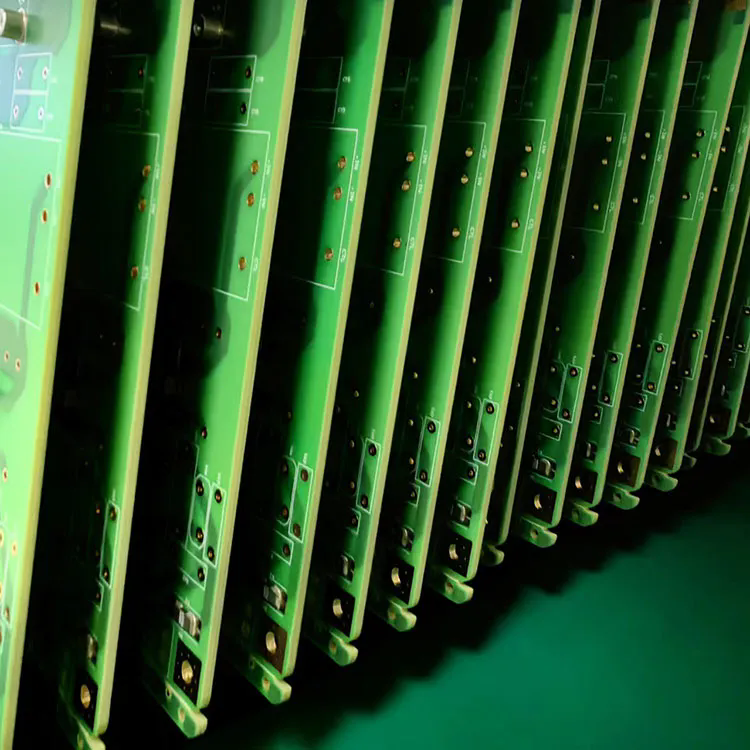Rogers PCBs are renowned for their high-performance in applications that require precise and reliable signal transmission. But what exactly is the frequency of Rogers PCB, and why is it important for various industries? In this blog, we’ll dive into what sets Rogers PCBs apart and how their frequency characteristics impact performance.

Rogers PCB refers to printed circuit boards made using materials from Rogers Corporation, a leading manufacturer of high-frequency laminate materials. These PCBs are commonly used in industries like telecommunications, aerospace, defense, and high-speed electronics due to their superior electrical performance. Unlike traditional PCBs, which often use FR4 material, Rogers PCBs are specifically engineered to handle higher frequencies with minimal signal loss.
The frequency in a Rogers PCB refers to the rate at which electrical signals oscillate during transmission across the board. High-frequency PCBs, like those made with Rogers material, can handle signal frequencies typically ranging from several hundred MHz to beyond 10 GHz, depending on the application. These high frequencies are crucial in industries where fast, accurate signal transmission is required, such as in radar systems, satellite communications, and wireless networks.
Rogers PCBs are favored for high-frequency applications because of their unique material properties. Here’s why:
1. Low Dielectric Constant (Dk): The dielectric constant of a material affects the speed at which signals travel through the PCB. Rogers materials have a low and stable Dk, which means signals can travel faster and with less distortion, making them ideal for high-frequency designs.
2. Low Loss Tangent: Rogers PCBs have a low loss tangent, meaning less signal energy is lost during transmission. This ensures that signals maintain their integrity over long distances and at high speeds, which is critical for maintaining communication quality.
3. Thermal Stability: Rogers materials exhibit excellent thermal stability, which allows them to operate consistently even under extreme temperatures. This is especially important in applications like aerospace, where equipment is exposed to variable and harsh environments.
4. Wide Frequency Range: Rogers PCBs are designed to operate across a broad frequency range, from RF (radio frequency) to microwave frequencies. This versatility makes them suitable for a variety of demanding applications.
Many modern technologies rely on high-frequency Rogers PCBs, including:
- 5G Networks: The implementation of 5G technology requires ultra-fast data transmission at high frequencies, making Rogers PCBs an ideal choice for infrastructure like base stations and antennas.
- Aerospace and Defense: Military radar systems, avionics, and satellite communications need highly reliable and fast signal transmission, often at microwave frequencies, which Rogers PCBs can support.
- Medical Devices: In the healthcare sector, diagnostic tools like MRI machines rely on high-frequency signals for clear imaging, and Rogers PCBs play a key role in ensuring accurate data transmission.
- Automotive: With the rise of autonomous vehicles and advanced driver assistance systems (ADAS), high-frequency PCBs are essential to process the vast amounts of data in real-time, allowing for safe and efficient operation.
Yes, Rogers PCBs are specifically designed to handle both RF (radio frequency) and microwave frequencies. These PCBs are known for their ability to maintain signal integrity at frequencies that exceed several GHz, which makes them ideal for applications that require the transmission of high-frequency electromagnetic waves. The ability to support both RF and microwave signals ensures that Rogers PCBs are versatile enough for a variety of modern technologies.
Compared to traditional FR4 material, Rogers materials are far superior when it comes to handling high frequencies. While FR4 is a cost-effective and widely used material for general PCBs, it has limitations in high-frequency applications. FR4’s higher dielectric constant and loss tangent mean that signal loss and distortion are more likely at high frequencies, making it less suitable for applications that require fast, reliable signal transmission. In contrast, Rogers materials excel in maintaining signal integrity at these higher frequencies.
In conclusion, Rogers PCBs are specifically designed for high-frequency applications that require low signal loss, stable performance, and high thermal reliability. Their unique material properties make them essential for industries like telecommunications, aerospace, defense, and medical devices, where precise and fast signal transmission is critical. If you are working on a project that demands high-frequency capabilities, Rogers PCB is the go-to option for ensuring optimal performance.
Hayner PCB Technology Co., Ltd. is a company that specializes in providing quality Rogers PCB to clients worldwide. Visit our website at https://www.haynerpcb.com/ to learn more about our products.
